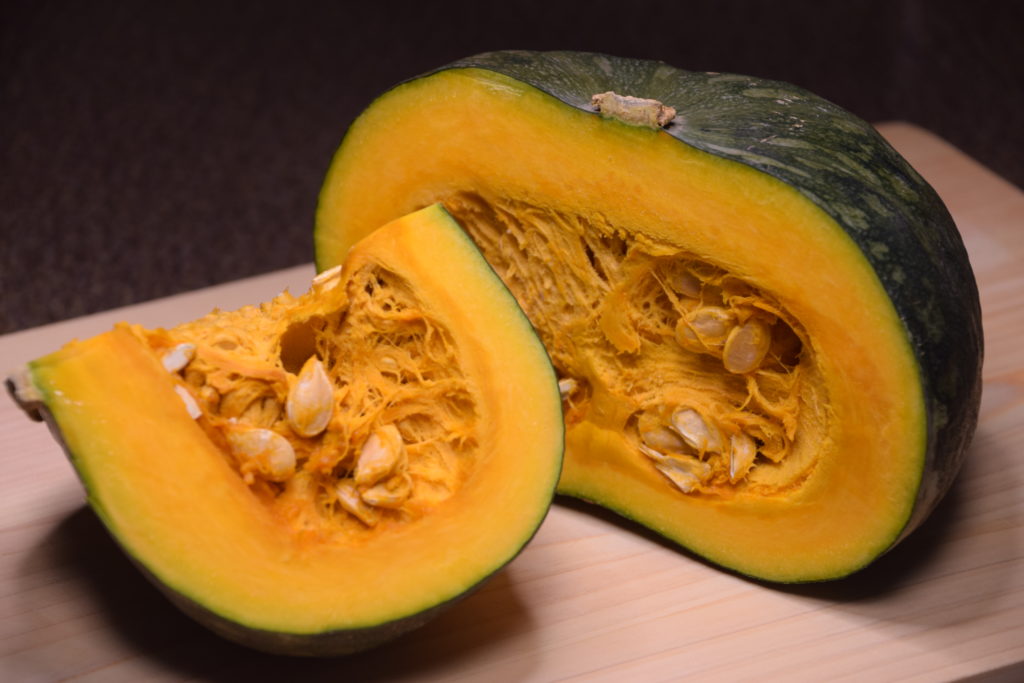

Yes, most squash will ripen off the vine, so long as it's relatively mature (i.e. All you need is 4 ingredients, kabocha squash, potato starch, salt, and oil. This fried kabocha squash, however, is one of our familys favorites because kids love it so much It would be a great side for dinner or snacks in between meals. The seeds should be mostly white or cream-colored and should be covered in the squash flesh while the rest of the squash should be a bright color inside. Kabocha squash is the sweet and starchy Japanese pumpkin that we make all sorts of dishes from. If you cook it and slice it open and see the same thing, toss it. If the seeds look slimy, or are an off color, the squash has spoiled.


It's low-cal, too.Īlso, how do you know if kabocha squash is bad? Subsequently, question is, can you eat kabocha squash raw? Raw Food Favorite – Kabocha Squash As you might guess from its bright orange flesh, Kabocha squash is high in beta carotene. 1 small to medium-size Kabocha squash 3 tablespoons dark brown sugar 1/4 teaspoon cayenne pepper (or to your taste) 1/4 teaspoon nutmeg, ground 1/4. The stripes will fade from light green to grey-green, and become narrower.
#Kabocha squash skin#
The skin color should fade from a bright green to a duller, greenish-brown shade, and the stems will become corky. Harvest buttercup or kabocha squash after they achieve their characteristic blocky shape. Similarly, it is asked, how do you know when a kabocha squash is ready to pick? And choose ones that feel heavy for their size (usually about 2-4 lbs). Cut into 1' thick slices, and roast on the baking sheet for 25-30 minutes or until fork-tender. Cut the kabocha squash in half and scoop out the seeds. Serve Japanese pumpkin fries with your favorite condiment. Line a baking sheet with parchment paper. Using a spoon, scoop out the seeds and stringy flesh. Cut the stem end off and then cut the squash vertically, from the stem end to the bottom end. Wash Kabocha squash well and pat it dry with a dishtowel. The skin should be crispy and golden brown when done. Line a baking sheet with parchment paper. Bake them for 30 - 40 minutes, flipping them halfway through. Toss the kabocha slices with vegetable oil and line them on a single layer on a baking sheet. Kabocha should be cured either on the vine for 10 days or in a climate-controlled room for 4 to 5 days for maximum flavor. If youd like to bake the kabocha fries, preheat your oven to 375 degrees F. This Japanese pumpkin is a prolific early maturing variety that produces 3-4 lb. Some faint stripes, bumps, or blemishes on the skin are fine. Kabocha Squash is an open-pollinated variety that is hailed by many as one of the best-tasting squash of all time. Not only that, this reliable producer keeps very well and improves with storage. Choose kabocha that has a firm, deep-colored green rind. Winter Sweet delivers a winning combination of sweetness, flaky texture, and depth of flavor that has made it a favorite on our research farm. Kabocha squash is small to medium in size, averaging 1-8 pounds, and is round, squat, and flat at the top and bottom with a short, corky, light brown stem. When picking out the perfect kabocha squash, the two most important factors to consider are color and weight.


 0 kommentar(er)
0 kommentar(er)
